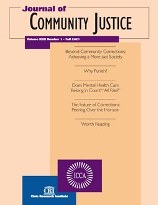What Happened to Canada?
Author: Mary E. Campbell, LL.B., LL.M..
Source: Volume 23, Number 04, Summer 2014 , pp.9-12(4)

< previous article |next article > |return to table of contents
Abstract:
In the 1990s, Canada was a model of progressive institutional and community corrections. Fair, humane, and effective legislation was in place; the Canadian Charter of Rights and Freedoms had changed the landscape of prisoner and parolee litigation; evidence-based policies were respected; and, perhaps most strikingly, Canada had deliberately embarked on a path of reducing reliance on incarceration and was succeeding. Twenty years later, the legislation is being systematically eviscerated. The Charter and the courts that interpret it are scorned by politicians; ideology trumps evidence; and the incarceration rate is steadily growing. How did Canada go from salutary to sad in this relatively short period? Was the fall from grace as predictable as the rise, or have unique factors been at play? Is there a quintessential Canadian silver lining in the clouds? This paper reviews the history of Canadian corrections and asks if there is reason to believe that it can emerge stronger and better. It cites innovations in other countries from which Canada corrections might benefit.Keywords: Canadian corrections, incarceration rates, parole, conditional release, recidivism
Affiliations:
1: Sentencing Expert, Ottawa.